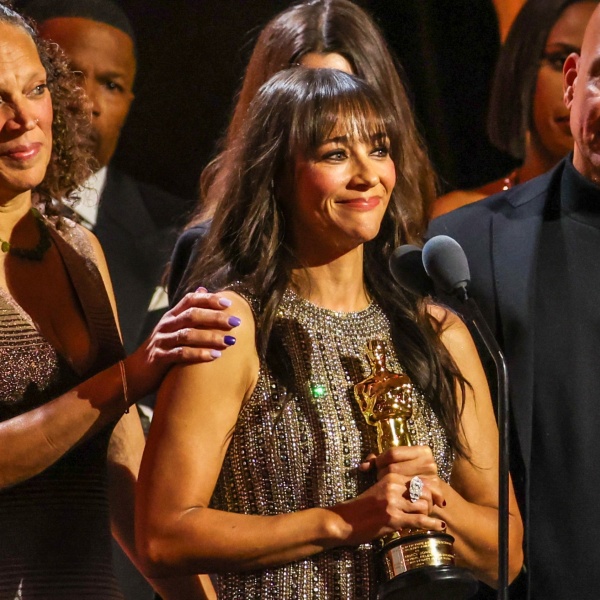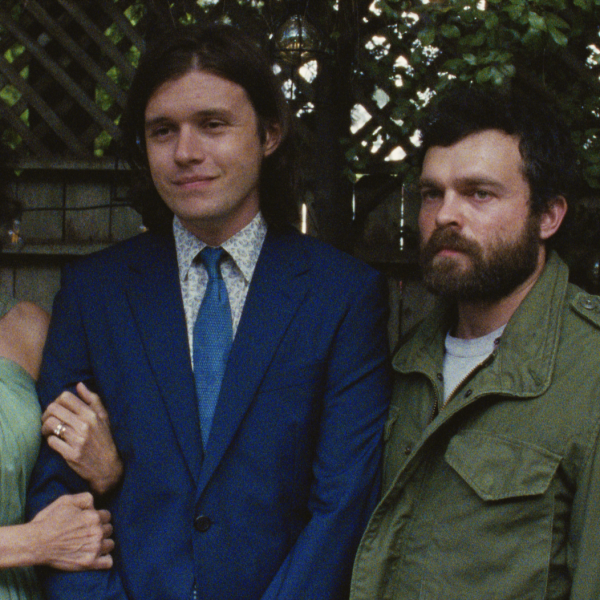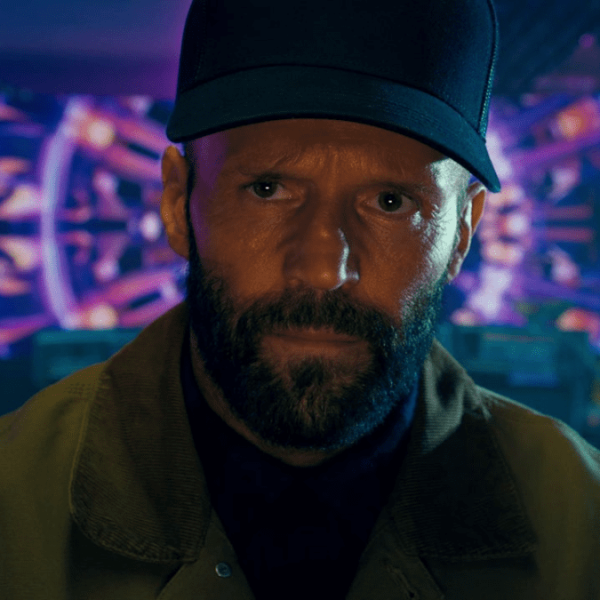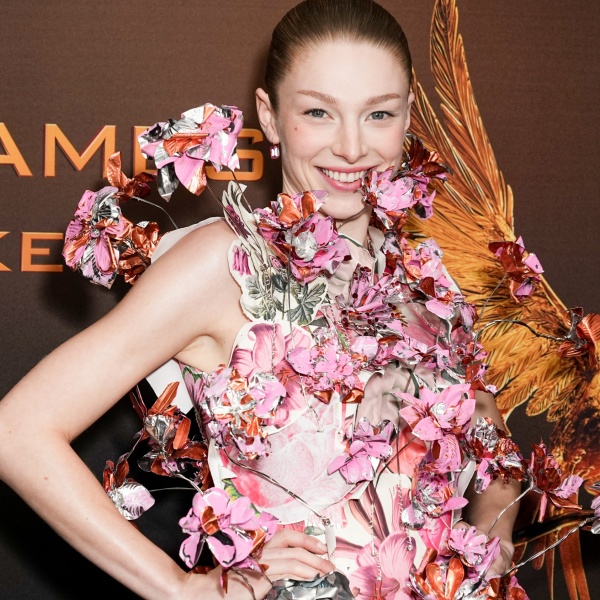There’s no question: 2023 is one of the best years for cinema so far this century, with an astonishing range of formally inventive, philosophically rich, and deliriously entertaining films. The year has been filled with great examples of nearly every type of movie, from mainstream theatrical releases and international festival entries to auteur-driven historical pieces and star-driven character studies, with innovative pictures by filmmakers from a broad array of backgrounds.
The art of cinematography has been particularly robust, and choosing the very best work in a year so rich is a difficult task. There are dozens of films not on this list that easily would have made it in a lesser year, and the ones that did make the cut will, we believe, stand the test of time. In terms of subject matter and tone the films couldn’t be more different; the candy-colored satirical extravaganza that is “Barbie” is as different from the darkly comic black-and-white horror of “El Conde” as the chilling natural light of “The Zone of Interest” is from the expressionistic stylization of “Marlowe.”
The only thing these movies have in common is that they all represent cinematographers operating at the peak of their talents — which is really saying something since most of them are already recognized as among the best in their field (and those who aren’t soon will be). Some are shot mostly or entirely on film (“Killers of the Flower Moon,” “Maestro”) while others represent the liberating, experimental potential of digital (“Priscilla”) or even create entirely new formats (the black and white IMAX of “Oppenheimer”). All are movies that use light, color, movement, and composition to tell essential stories from a diverse group of eras and places.
Christian Blauvelt, Bill Desowitz, and Sarah Shachat also contributed reporting.
-
“Barbie”

Image Credit: ©Warner Bros/Courtesy Everett Collection The cinematography of “Barbie” is everything. It is as varied and as joyous as all the cinematic inspirations coursing through the Greta Gerwig film’s DNA and as much of a technical challenge to pull off as anything coated in prestige instead of pink. Cinematographer Rodrigo Prieto gets to do his Terrence Malick/the living miracle of trees thing when Barbie (Margot Robbie) goes to The Real World and meets Ann Roth. But the camera in Barbie Land treats life in plastic with the same color-dense artistry and wonder that make Jacques Demy films like stepping into a painting, only more. This is to say nothing of the multiple musical numbers, Tati-esque chases, and an in-between world of both white void and riotous color that would make The Archers proud. The most wonderful and impressive part, though, is that all of the film’s different looks, references, and approaches to its characters fit in the same box. That is down to Prieto, who steadily and beautifully expands the film’s visual language as Barbie experiences a growing awareness of humanity (and Ken). —Sarah Shachat
-
“La Chimera”

Image Credit: Neon Hélène Louvart’s work is always the stuff of life: carefully planned enough to allow for the understanding of life that only art can provide but improvisatory enough to allow for magic. In “La Chimera,” it feels like her cinematography provides revelations as much as images, glimpses of the ancient world — and perhaps glimmers of the next. It’s as dimly list as can be when Josh O’Connor’s misbegotten antiquities thief uses only a small candle to light his way into Etruscan tombs, then bright as a day out sunbathing when his character confronts his black market broker on a millionaire’s yacht. Alice Rohrwacher’s film combines tones with quicksilver abandon — suspenseful one moment, silly the next, then suddenly profound — and Louvart, who’s worked with such unclassifiable masters as Agnès Varda, Wim Wenders, and Eliza Hittman, is uniquely capable of keeping up with mercurial storytelling. She can capture a tiny pinpoint of light streaming through dirt and make it feel like a portal to the beyond in a way that’s intimate — and everything. —Christian Blauvelt
-
“The Color Purple”

Image Credit: ©Warner Bros/Courtesy Everett Collection For sheer visual beauty it’s tough to beat cinematographer Dan Laustsen’s achievement in “The Color Purple,” a film drenched in glowing, enchanting light from beginning to end. Laustsen conveys heroine Celie’s spiritual awakening through a visual style that awakens the audience’s eyes and spirit as well, working in close collaboration with director Blitz Bazawule and the film’s other department heads to create a fully integrated symphony of light, color, and movement. The non-musical scenes are as elegantly choreographed as the dance sequences, and Laustsen’s camera moves and lighting cues dance with the actors in a manner that both invites and earns comparison with the classic musicals of Stanley Donen and Vincente Minnelli. Yet Lauststen is beholden to no one in his approach, taking off in his own highly original directions to find imagery that encompasses the entire emotional spectrum of human experience but ultimately leaves the audience feeling as inspired and liberated as Celie herself. —Jim Hemphill
-
“El Conde”

Image Credit: ©Netflix/Courtesy Everett Collection In a digital age in which black and white cinematography is often just desaturated color footage, director of photography Ed Lachmann adapted (and in some cases reinvented) the tools of the monochromatic masters. The result is the classical look of a 1940s Gregg Tolland shot studio film mixed with the trippy atmospherics of director Pablo Larraín’s Pinochet-as-a-vampire theatrics. Each image is inventive and alive, with rich mid-tones and layers of contrast that only hammer home just how muddy, murky, and mundane our movies have become. —Chris O’Falt
-
“Godland”

Image Credit: Courtesy Everett Collection A Lutheran priest, sent from Denmark to establish a new parish in Iceland, has his faith tested as he traverses the treacherous rural landscape to reach his destination. While the film and its desolate setting are striking, it’s what the cinematography evokes from the landscape that gives it power. That director Hlynur Pálmason, cinematographer Maria von Hausswolff, and their small crew had to carry their equipment on an arduous journey of their own (filming in chronological order) is felt on screen. Shot in a 4:3 aspect ratio on 35mm film — in a story set at the dawn of photography (the priest lugs an 1860s wet plate camera to document his journey) — every frame is an indelible portrait of character and surrounding, sitting somewhere at the intersection of the spiritual mystery of a sweeping Powell and Pressburger landscape, and the externalization of violent conflict in a great western. —CO
-
“Killers of the Flower Moon”

Image Credit: ©Paramount/Courtesy Everett Collection Cinematographer Rodrigo Prieto and director Martin Scorsese gave us their fourth masterpiece in a row with this lyrical but devastating Western (following “The Wolf of Wall Street,” “Silence,” and “The Irishman”), and it contains some of their most impressive work to date. Working with Panavision lens wizard Dan Sasaki, Prieto created textures that emulate the look of still photography from the era in which the movie takes place, yet there’s nothing aesthetically distancing or self-conscious about this approach — the audience’s direct connection to the characters is as strong as it’s ever been in a Scorsese film. Indeed, one of the most powerful aspects of “Killers of the Flower Moon” is the way that the close-ups of actors’ faces are as expansive and complex as the sweeping vistas. From its terrifying interiors in which Robert De Niro’s King Hale plots mass murder to the elegiac landscape shots that express what is being lost by Hale’s destructive evil, “Killers of the Flower Moon” is the greatest combination of the intimate and the epic since “The Last Emperor.” —JH
-
“Maestro”

Image Credit: ©Netflix/Courtesy Everett Collection Matty Libatique reunites with his “A Star is Born” director Bradley Cooper for a movie that not only expands upon and deepens the themes of that film but strikes out in bold, ambitious, and risky directions that all pay off. Jumping between aspect ratios and styles, Libatique finds the perfect visual corollary for Leonard Bernstein’s chaotic, troubled, brilliant mind, and in the process also expresses the difficulty of being a romantic partner to a tormented genius. The elaborate long takes aren’t just for show; they visually convey the emotional labyrinth of the lead characters’ complicated relationship, and the alternating aspect ratios and jumps from Kazan-esque realism to Powell and Pressburger delirum take it all one step further. In Libatique’s hands, this is the loveliest exploration of the difficulty of love between creative people since “New York, New York.” —JH
-
“Marlowe”

Image Credit: Courtesy Everett Collection Neil Jordan’s homage to Raymond Chandler and the film noir classics of Hollywood’s golden age didn’t find the audience it deserved when it opened in February, but cinematography enthusiasts shouldn’t sleep on it, as Xavi Giménez crafts some of the most exquisite imagery of this or any other year. While the narrative takes its cues from 1930s crime fiction, the visual style is more that of 1950s Technicolor; Giménez certainly supplies a steady stream of chiaroscuro and shafts of light through venetian blinds, but he moves beyond noir clichés to immerse the film and the audience in constant explosions of vivid color. The result is one impeccably crafted and inviting shot after another. Movies don’t come more beautiful or as pleasingly composed — the widescreen tableaus both invite and earn comparison with the greatest work of Vincent Minnelli and Nicholas Ray. —JH
-
“Napoleon”

Image Credit: ©Sony Pictures/Courtesy Everett Collection Ridley Scott’s epic tale of the titular French emperor and military legend is as sweeping in scope as anything he’s ever directed — large scale battle sequences like those set at Austerlitz and Waterloo make the set pieces in “Gladiator” look like scenes from “My Dinner With Andre.” For cinematographer Dariusz Wolski, the challenge was to cover the spectacle with multiple cameras — as many as 14 in some scenes — without compromising the beauty of his lighting. Wolski proved himself to be up to the task, with painterly landscapes and dynamically composed moments of destruction and violence as gorgeous as they are kinetic. Where Wolski really distinguishes himself, however, are in the interiors, where he adopts an approach borrowed from “Barry Lyndon” and employs candlelight and other natural sources to create a gorgeous, subtle interplay of light and shadow on the actors’ faces to make “Napoleon” as exciting when it’s dealing with the idiosyncrasies of the human heart as it is when exploring the chaos of warfare. —JH
-
“Oppenheimer”

Image Credit: ©Universal/Courtesy Everett Collection “Oppenheimer” represents the culmination of Hoyte van Hoytema’s IMAX collaboration with director Christopher Nolan, given the complexity of this historical thriller about physicist J. Robert Oppenheimer (Cillian Murphy), the “father of the atomic bomb.” The cinematographer achieves a new kind of intimate spectacle with the large-format IMAX camera to explore the landscape of faces, redefining portraits and close-ups. Specifically, the faces of Oppenheimer and Admiral Lewis Strauss (Robert Downey Jr.), a major figure in the development of nuclear weapons during the Cold War and Oppenheimer’s primary adversary. To help achieve this, the film is divided into separate perspectives and timelines: Nolan calls Oppenheimer’s “Fission” (in color) and Strauss’ “Fusion” (in black-and-white). This is in keeping with the quantum physics theme. The challenge for Van Hoytema was to be able to get closer with the camera to make the faces enormous, interesting, and captivating. For this, Dan Sasak, Panavision’s vice president of Optical Engineering, supplied and adapted Hasselblad, Panavision Sphero 65, and Panavision System 65 lenses. Apart from a few surreal moments imagined by Oppenheimer, van Hoytema went for period naturalism in conveying the contrasting personalities and emotions of Oppenheimer and Strauss. Yet the large-format black-and-white film was a first for Kodak, and how they finished it for use in the IMAX camera was a breakthrough, thanks to the partnership between Kodak, FotoKem, IMAX, and Panavision to support the 65mm black-and-white workflow. —Bill Desowitz
-
“Poor Things”

Image Credit: ©Searchlight Pictures/Courtesy Everett Collection There are only four lenses that cinematographer Robbie Ryan mixed and matched in order to shoot “Poor Things” —which is absolutely bonkers considering how strange and beautiful a world the film builds for its heroine, Bella Baxter (Emma Stone), to explore. Ryan seamlessly toggles between a strange fish-eye look that feels like seeing the world with a swapped-out brain and very choreographed zooms that keep finding new thoughts and emotions as a scene goes on while continuing to expand the deliciously wild things that he and director Yorgos Lanthimos can do with wide shots. But such is Ryan’s skill that the cinematography of “Poor Things” never feels shouty or looks overly composed. For as much joy as there clearly is embedded in Ryan’s ambitious tracks through the film’s breathtaking sets, he makes sure that the camera always takes its cues from Bella; it finds the same delightfully unexpected angles and heightened routes through the world she does. —SS
-
“Priscilla”

Image Credit: Courtesy Everett Collection Cinematographer Philippe Le Sourd is responsible for some of the most gorgeous images in 21st-century film, from the glowing French vineyards of Ridley Scott’s “A Good Year” to the epic poetry of Wong Kar-wai’s “The Grandmaster,” for which he was nominated for an Academy Award. Yet, for all his accomplishments, there’s one thing Le Sourd had never done: shoot a feature film digitally. That changed when Le Sourd reunited with his “The Beguiled” and “On the Rocks” director Sofia Coppola for “Priscilla,” a visually stunning, emotionally penetrating portrait of Priscilla Presley as her world simultaneously expands and contracts when she marries the most famous musician on the planet. Shooting digitally seems to have liberated Le Sourd, not limited him — the haunting interiors and the sun-drenched exteriors that express Priscilla’s excitement and bewilderment are among the boldest images he’s ever created, and they make one excited for the digital experimentation to come. —JH
-
“Saltburn”

Image Credit: ©Amazon/Courtesy Everett Collection There’s no other way to say it: The cinematography of “Saltburn” whips. Linus Sandgren doesn’t linger on the grandeur of the titular estate in the way that films usually fetishize magnificent English manors. Instead, he and director Emerald Fennell fetishize everything else. The camera has the same wonderful eye for lurid details as Oxford student Oliver (Barry Keoghan); Sandgren creates and lights frames that bring out the absurdity of a cigarette stain or a cold bit of pie that cuts down to size Saltburn’s owners, the Cattons. The cinematographer somehow finds the right balance in his compositions; just the right amount of windows and hallways pressing on all the residents of the great house and bringing out both the longing and the violence of Oliver’s desire to be Felix Catton’s (Jacob Elordi) indispensable other half. Sandgren achieves a strong, alluring look that is equally painterly and paranoid. “Saltburn” is, in other words, a great gothic romance. —SS
-
“The Zone of Interest”

Jonathan Glazer’s “The Zone of Interest” takes a forensic look at the banality of evil in this real-life depiction of SS officer Rudolf Höss (Christian Friedel), the commandant of Auschwitz, who lived very close to the concentration camp with his wife, Hedwig (Sandra Hüller), and their five children. Oscar-nominated cinematographer Łukasz Żal (“Ida” and “Cold War”) captures the goings on in and out of the house and in the lovely garden with a fly-on-the-wall, unsettling mood of surveillance. The result is the beauty of nature slammed against the horror of death within eyeshot of the nearby death camp. Żal was aided by an accurate recreation of the original Höss house and garden and an innovative setup inside the house. There were 10 cameras shooting at the same time, hidden in furniture or in walls (which could see each other and required removing in post). To make it as easy as possible, they used the Sony Venice with Rialto extension, the smallest camera available. The lenses were Leitz M 0.8 because they wanted to look at Germans through German lenses and because they are modern, sharp, and still cinematic. In addition, they didn’t use any additional lighting, only practicals and natural light. —BD







